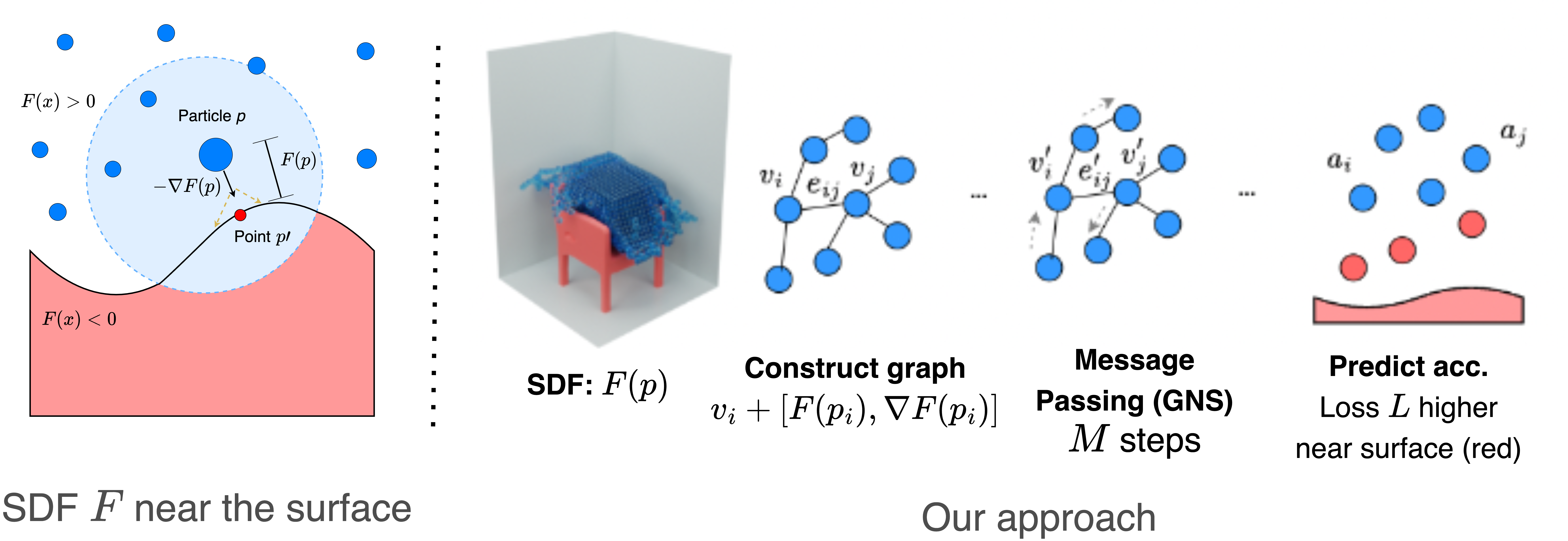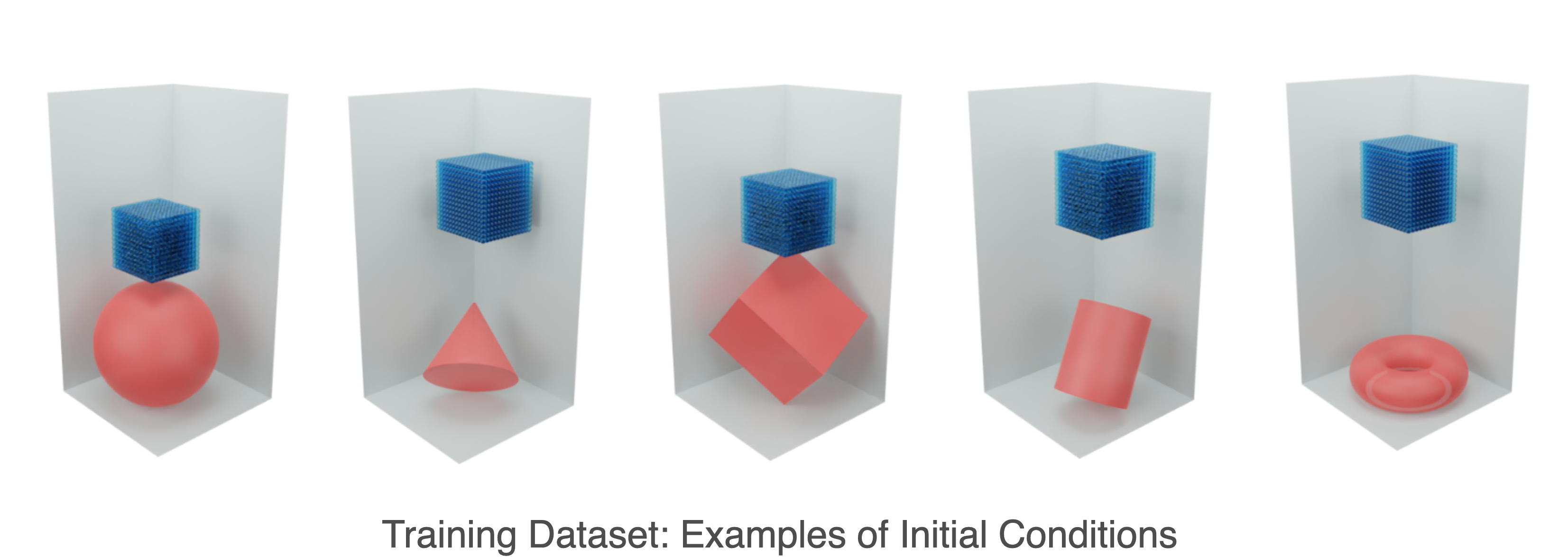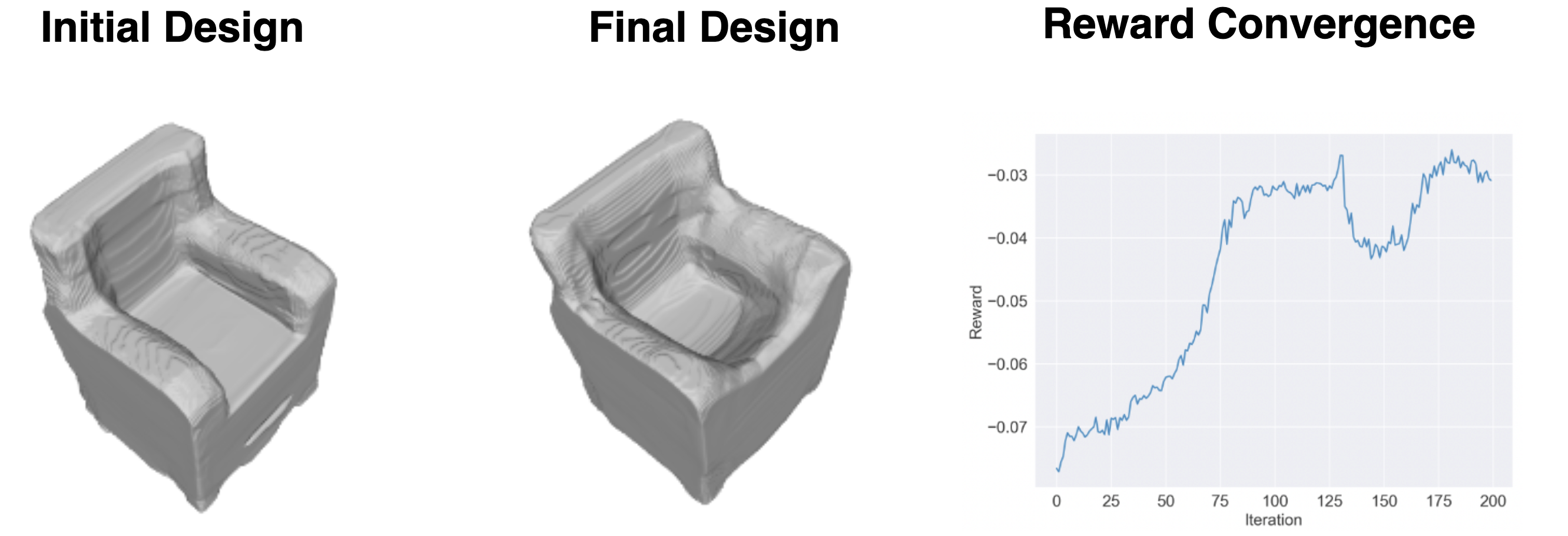SurfsUp: Learning Fluid Simulation for Novel Surfaces
*Equal Contribution
¹Columbia University ²University of Toronto ³Vector Institute
Abstract
Modeling the mechanics of fluid in complex scenes is vital to applications in design, graphics, and robotics. Learning-based methods provide fast and differentiable fluid simulators, however most prior work is unable to accurately model how fluids interact with genuinely novel surfaces not seen during training. We introduce SurfsUp, a framework that represents objects implicitly using signed distance functions (SDFs), rather than an explicit representation of meshes or particles. This continuous representation of geometry enables more accurate simulation of fluid-object interactions over long time periods while simultaneously making computation more efficient. Moreover, SurfsUp trained on simple shape primitives generalizes considerably out-of-distribution, even complex real-world scenes and objects. Finally, we show we can invert our model to design simple objects to manipulate fluid flow.
Method Overview
We propose a framework for simulating the interaction of fluids and surfaces by representing the surface using implicit representations. We argue that implicit representations, in particular signed distance functions (SDFs), provide a smooth, richly informative representation of local object geometry, useful not just for statics but for dynamics. We use a graph network simulator and add features to each fluid particle indicating the SDF value (indicating this particle's distance to the closest point on the surface), and the gradient of the SDF which provides the orientation w.r.t. the closest point. Please see the paper for further details.


Simulating Fluid Interacting with Complex Scenes
Comparison to State-of-the-art Baseline
Inverse Design
Parametrized Design Tasks
Latent Space Design

BibTeX
@InProceedings{mani_surfsup_2023,
author = {Mani, Arjun and Chandratreya, Ishaan Preetam and Creager, Elliot and Vondrick, Carl and Zemel, Richard},
title = {SurfsUp: Learning Fluid Simulation for Novel Surfaces},
booktitle = {Proceedings of the IEEE/CVF International Conference on Computer Vision (ICCV)},
month = {October},
year = {2023},
pages = {14225-14235},
url = {http://arxiv.org/abs/2304.06197}
}
Acknowledgements
We thank Huy Ha for help with creating visualizations of fluid rollouts. We also acknowledge Jan Bender for helpful feedback on finer points of the the SPlisHSPlasH simulator, as well as Kelsey Allen, Tobias Pfaff, and Alvaro Sanchez-Gonzalez for advice on training the graph network-based simulator. We thank Max Helman for early work on setup of the SPlisHSPlasH simulator. This research is based on work partially supported by the NSF STC for Learning the Earth with Artificial Intelligence and Physics, and the NSF NRI Award #1925157. Arjun Mani is supported by the NSF fellowship. The views and conclusions contained herein are those of the authors and should not be interpreted as necessarily representing the official policies, either expressed or implied, of the sponsors. The webpage template was inspired by this project page.